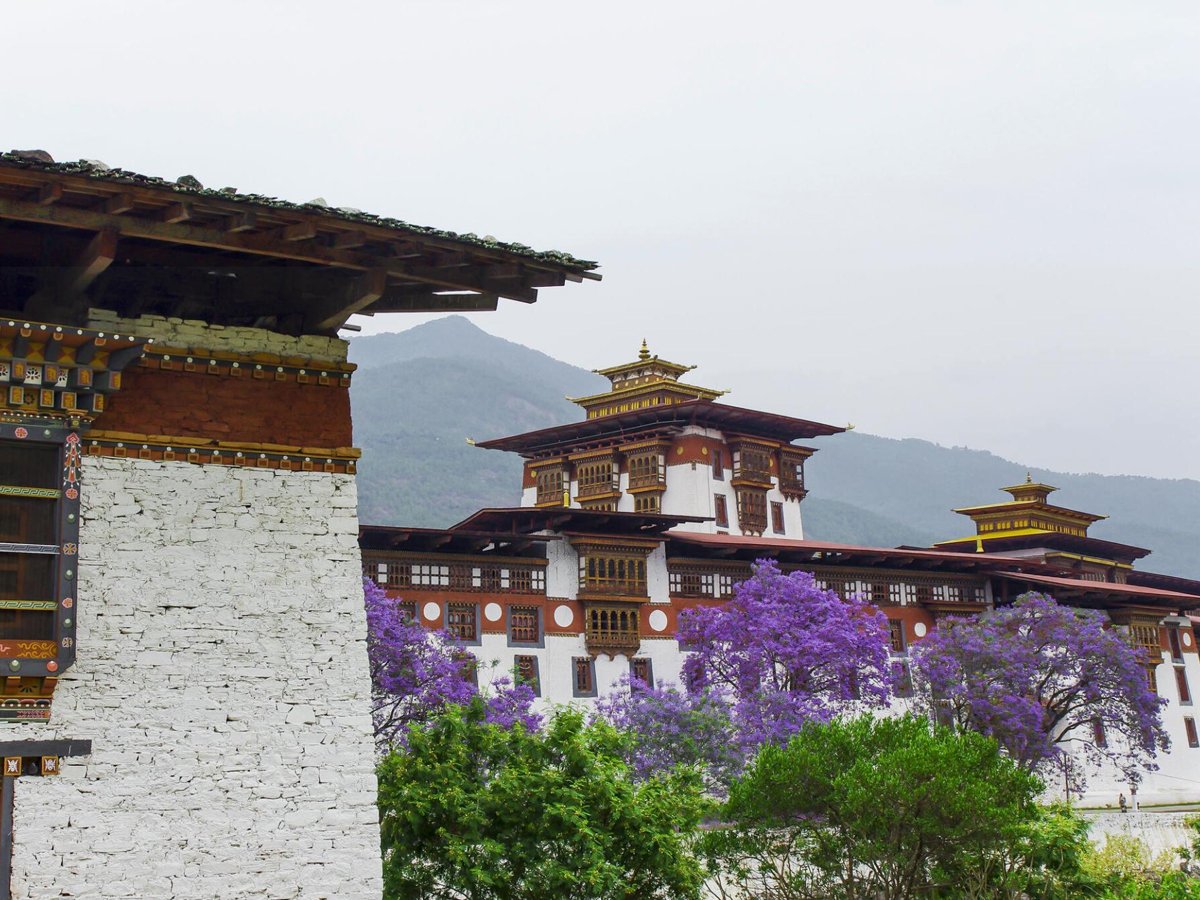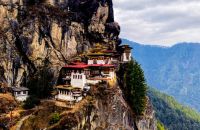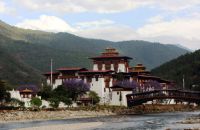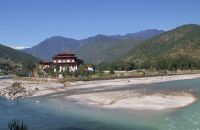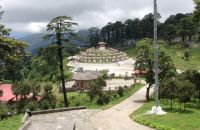Talk with our local travel specialist who can help organize your trip.
14 Delightful and Surprising Facts About Bhutan
1. Druk Yul: The Bhutanese name of Bhutan
The local name for the Kingdom of Bhutan is "Druk Yul," meaning "Land of the Thunder Dragon." This name is closely associated with the country's culture, heritage, tradition, and landscape. A Tibetan Buddhist Lama, Ngawang Namgyal, also known as Zhabdrung Rinpoche, contributed to the unification of Bhutan in the 17th century. Bhutan's culture, tradition, and governance are a continuation of that heritage.
Ngawang Namgyal considered the founding father of Bhutan, is said to have guided Bhutan through divine intervention in the form of thunderstorms. "Druk" means" Thunder dragon." The thunder dragon, which produces the dazzling light of thunder, is considered a symbol of protection, power, and divine guidance. The national flag of Bhutan also includes this symbol.
2. National priority in Gross National Happiness (GNH)
Bhutan focuses on promoting an inclusive and balanced approach to social progress. It emphasizes holistic well-being above the conventional economic matrices. The country's priority areas are building a harmonious society, educating spiritual beliefs, protecting the environment, working toward providing almost free education, free primary health care, and sustainable tourism. This implies that the spiritual, mental, and emotional well-being of the citizens have been considered integral components of their national progress.
An increase in its GNH index from 0.743 (2010) to 0.781 (2022) vouches this national priority. This means that Bhutan values GNH more than the general GDP adopted by other countries.
3. Sustainable Development Fee (SDF) for well-being
In Bhutan, all international tourists are supposed to pay a Sustainable Development Fee (SDF) of $100. The government has slashed this fee from $200 to $100. It has been said that the new fee will persist until 31 August 2027. Income from this source supports sustainable development projects, environmental protection, social welfare, and cultural preservation. This almost unique approach has contributed to the inclusion of this country in a fairly good happiness index.
4. World's first carbon-negative country
Approximately 70% of Bhutan's land is covered with trees. The constitutional mandate of the country is to maintain at least 60% forest coverage. The purpose of this mandate is to conserve natural resources and maintain ecological balance. The forests absorb more carbon dioxide than the country produces through various industrial and domestic activities.
Bhutan is said to be the world's first carbon-negative country. The government, as well as the people, gave great importance to the plantation. As the best record 49,672 trees were planted in one hour. The greenery is quite evident when one enters the Paro International Airport surrounded by it.
5. Ban on climbing high mountains

On the grounds of cultural beliefs, Bhutan has restricted or prohibited climbing some mountains, especially those above 6000 meters. This ban is imposed to protect the sanctity of the mountain and preserve it for future generations.
The highest mountain in Bhutan, Gangkhar Puensum, has an elevation of 7,570 meters. Some attempts to summit this mountain before 1994 failed due to certain reasons. The ban was imposed in 1994. This makes Gangkhar Puensum the highest mountain in the world that has yet to be completely summited. The climbers require permission from the government authorities and must follow strict regulations for the protection of cultural and natural heritage.
6. Takin: An amazing mammal as a national animal

Bhutan's national animal is the Takin. This animal is a rare and protected mammal. It is associated with mythology and religious history. It is found in mountains above 4000 m and can weigh over 200 kilograms. Takin is a unique, muscular, strong, and distinctive animal.
According to Bhutanese mythology, a Tibetan saint, Drukpa Kunley, created this animal by fusing the head of a goat and the skeleton of a cow. Its structure resembles a cross between a goat, a cow, and an antelope.
Featured Trips
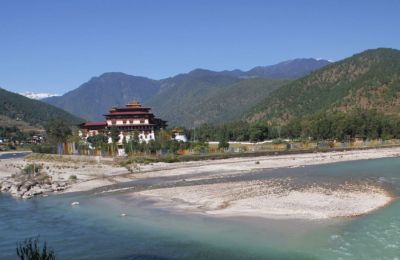
Bhutan Cultural Tour - 5 days
Bhutan Cultural Tour of 5 days lets you discover the rich Bhutanese culture. Visit ancient fortresses and Taktsang Monastery. Enjoy traditional hot stone bath.
Inquire Now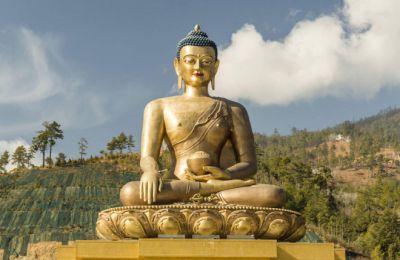
Bhutan Heritage Tour - 8 days
Bhutan Heritage Tour lets you explore centuries-old dzongs and Lakhangs built by Bhutanese kings and spiritual leaders. Take this Bhutan Heritage Tour and journey across the cultural hotspots of Bhutan, a fascinating Himalayan kingdom.
Inquire Now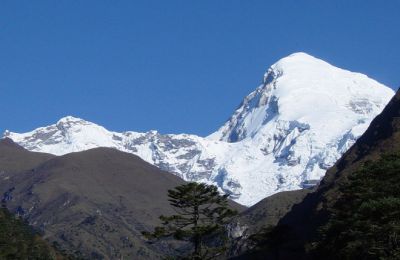
Jomolhari Trek - 11 days
Jomolhari Trek offers a taste of the great variety of Bhutanese landscapes and the most enchanting adventure trek in Bhutan. Jomolhari is the second-highest unclimbed mountain in Bhutan.
Inquire NowWhere to travel next?
Get help from our travel specialists for holiday ideas that matches your interests.
7. Archery: An amazing national sport

Bhutan declared archery as a national sport in 1971. It is played throughout the country. It has completed in archery in the Olympic Games since 1984. This sport has a significant cultural significance in Bhutan. They prepare distinct bows and arrows using bamboo. The archery requires a high level of skill, precision, and concentration.
Tourists can attend the archery tournaments in the country, which involve the joy of music, dance, and colorful attire. The inclusion of archery as a national sport is another attempt to preserve the cultural practices and heritage.
8. Adherence to Driglam Namzha for dress code
Bhutanese wide practice and signify Driglam Namzha, which dictates dress code and behavior for formal occasions. Bhutan's national dress for official and formal occasions is "Gho" for men and "Kira" for women. Gho is a knee-long robe tied at the waist. Kira is a bright ankle-length pleated dress that covers the body. These dresses are rooted in their culture and tradition.
Although this dress is not compulsory for everyday wear, wearing it on official and formal occasions reflects the country's commitment to preserving its identity, unity, and tradition. This compulsory national dress for all citizens demonstrates the country's commitment to preserving its culture and tradition, which contributes to the well-being of the people.
9. No traffic lights in the capital
Bhutan finds an identity as a country having no single traffic light in its capital city, Thimpu. This is a rare and surprising fact. Police manually control traffic at major intersections. Traffic police officers regulate traffic with acrobatic and friendly gestures.
This decision to have police control over a modernized lighting system was liked by the public. The manual control was deliberately proposed for a more human-centric and community-based approach to urban development. This also emphasizes the protection of the cultural and environmental aspects. Despite this limitation, road accidents in the city are rare.
10. Belief in the existence of Yeti: Beyond myth
Yeti (locally known as Migoi in Bhutan), an Abominable Snowman, is said to be an inhabitant of the Himalayan region of Bhutan, Nepal, and Tibet. The Yeti's current existence is largely a myth. Whether real or imagined, Yeti is a part of Himalayan folklore.
Many Bhutanese still believe in the existence of Yeti. The symbol of Yeti is considered a guardian against evil spirits. The Yeti is featured on many of Bhutan's stamps. Snowman Trek, which is a tough trek, is named after Yeti.
11. Unique architecture and paintings of homes

In Bhutan, houses are built in a traditional style. It features a sloping beamed roof, a beautiful arch window, and whitewashed walls with unique paintings. Common building materials include stone, earth, bamboo, and other woods. The traditional house paintings represent Bhutanese art and culture. Commonly used colors are white, red, blue, and green. Commonly, the paintings involve auspicious symbols and pictures of mythical creatures, which symbolize harmony. The dragon painting symbolizes protection and power. Phalluses painting, a picture of erect penis, considered a symbol of fertility and happiness, can still be seen on the walls of houses.
Featured Trips
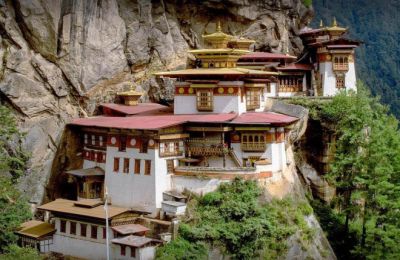
Nepal and Bhutan Tour - 9 days
Experience the beauty and culture of Nepal and Bhutan with our exclusive tour package for 2024/2025. Book now and create unforgettable memories!
Inquire NowWhere to travel next?
Get help from our travel specialists for holiday ideas that matches your interests.
12. Women's empowerment
For the holistic development and overall well-being of the people, Bhutan prioritizes women empowerment. To ensure gender equality and sustainable development, women are encouraged to participate in politics, policy-making activities, and business. In many sectors of the economy, women do almost as much work as men. Women run businesses in many industries. The focus on an inclusive environment that goes beyond stereotypes has contributed significantly to the country's remarkable position in Gross National Happiness (GNH).
13. Last nation in the world to introduce television
Bhutan initially resisted television influence to maintain its purity and cultural identity. Bhutan officially introduced television in 1999. Use is carefully controlled to balance modernization and preservation of Bhutanese culture. This way, Bhutan finds a place as the last nation to introduce television.
This country's commitment to prioritizing the well-being of the people and the preservation of culture over modernization is the root cause of this controlled use of television.
14. Great destination for trekking and adventure

Bhutan is a great destination for adventure and trekking enthusiasts. Bhutan is home to beautiful landscapes, diverse topography, towering Himalayan mountains, forests, forts, and beautiful valleys. Bhutan's cultural heritage makes adventure travel more enjoyable.
The Snowman Trek is supposed to be the world's toughest trek. Jomolhari Trek is another trekking route that takes trekkers to the base camp of Jomolhari Mountain. Visits to the ancient monasteries give tourists divine peace.
Some important tourist destinations include Paro Taktsang/Tiger's Nest (a sacred and symbolic monastery), Thimphu (capital city), Bumthang Valley (a spiritual site and cultural heritage), Gangtey Valley (a beautiful ice valley), Haa Valley (a valley with traditional villages), Phobjikha Valley (a valley with conservation area), Chimi Lhakhang (a historic temple), Punakha Dzong (a fort in the confluence of two rivers), Trongsa Dzong (a strategical fortress), Rinpung Dzong/ Paro Dzong (a fortress-monastery), Chele La Pass (a passe which provides panoramic views of the Himalayas), Dochula Pass (a mountain pass with 180 stups), and Jigme Dorji National Park (a national park).
Conclusion
The beautiful country of Bhutan is known for focusing more on the holistic development of its people in terms of cultural preservation, environmental protection, and social harmony. It is known for perfectly blending modernization with cultural preservation, even in this era.
The Kingdom of Bhutan's cultural uniqueness, surprising fun facts, and breathtaking beauty make it strikingly unique.
Bhutan is a major tourist destination that must be visited in a lifetime. For an adventure unlike any you have encountered, please reach out to our team, who will help you organize your trip to Bhutan.
- Written by: Naba Raj Amgai
Updated: Feb, 14, 2024

